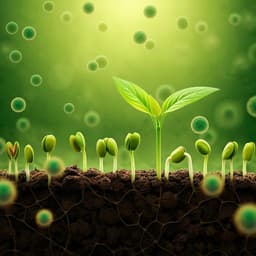
Engineering and Technology
Photon upconversion crystals doped bacterial cellulose composite films as recyclable photonic bioplastics
P. Bharmoria, L. Naimovičius, et al.
Discover how a team of researchers, including Pankaj Bharmoria and Lukas Naimovičius, have developed a groundbreaking method for creating sustainable photonics bioplastics by integrating photon upconversion technologies with biodegradable materials. This innovative approach not only enhances optical functionality but also promotes chromophore recycling for a greener future.
Playback language: English
Related Publications
Explore these studies to deepen your understanding of the subject.







